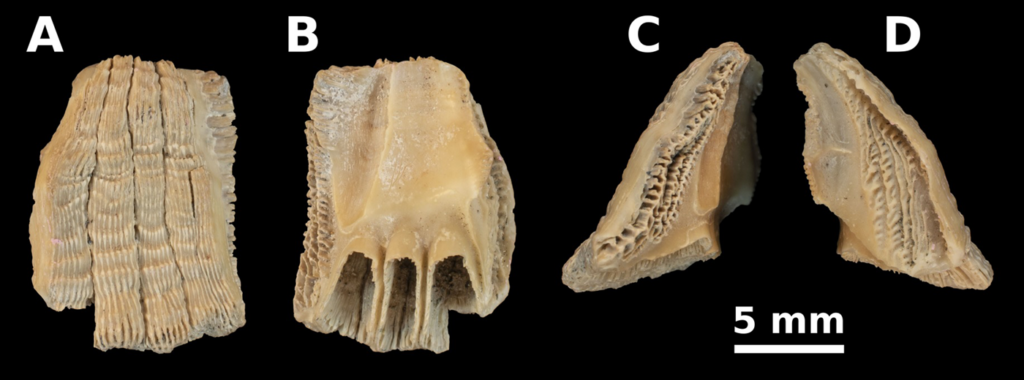Over 100,000 years ago, a barnacle grew on a whale, migrated with it for a year, and then dropped off onto the seafloor. Sixty-two years ago, it was found and placed in the UCMP collections. Fifty years ago a master’s student studied it, but never published it. This week, that barnacle is finally published and given a name – Cetopirus polysyrinx.
Whale barnacles are filter feeders who implant on the skin of a whale and live for about one year. A new species of whale barnacle from the West Coast was recently re-discovered in UCMP’s invertebrate paleontology collection. This new study, published by Dr. Alberto Collareta (<Università di Pisa), Mark Bosselaers (Koninklijk Belgisch Instituut voor Natuurwetenschappen), and UCMP Museum Scientists Drs. Ashley Dineen and Patricia Holroyd, formally describes the new extinct species.
The specimen was originally collected from the middle Pleistocene Port Orford Formation near Cape Blanco, Oregon, by V.A. Zullo and J.A. Wolfe in 1960. In 1972 a masters degree student (C.W. Davis) at San Francisco State University recognized the specimen as a new genus and species in his thesis. The specimen is recognized as a new species of the living genus, Cetopirus, which is today exclusively found on Pacific right whales. The new species of barnacle likely also lived as an epibiont of the Pleistocene right whales that migrated along the Pacific coastline then as they do today.
Read the new research in the journal of Earth and Environmental Science Transactions of the Royal Society of Edinburgh. See 3D scans of the specimen online at MorphoSource.
